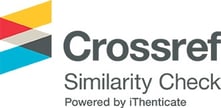Implementasi Chatbot untuk Layanan Frequently Asked Question Akademik dengan Penggunaan Dialogflow
DOI:
https://doi.org/10.33020/saintekom.v13i1.337Keywords:
chatbot, dialogflow, academic serviceAbstract
Academic Frequently Asked Questions (FAQ) service is a service designed to answer academic questions that are often asked by students. A survey conducted on April 12, 2022, to 33 students of the Ahmad Dahlan University Informatics study program showed that 39.4% of students rarely open the FAQ menu on the portal application. Students more often ask questions to administrators and lecturers, but 30.3% of students receive answers that last more than 10 minutes. Chatbot is an artificial intelligence system used to interact with users in real-time to provide information. The use of dialog flow in the system helps manage information and can provide an answer quickly and precisely to users. This research uses the waterfall method, which is a simple classic model with a linear flow system. The User Experience Questionnaire (UEQ) survey results get a score of 1,536 for attractiveness, 1,714 for clarity, 1,375 for efficiency, 1,357 for fixity, 1,536 for stimulation, and 0.964 for novelty. Based on these results, it shows that the application level is above average on the UEQ scale.
Downloads
References
Adinegoro, A. L. T., Rokhmawati, R. I., & Az-Zahra, H. M. (2018). Analisis Pengalaman Pengguna pada Website E-commerce Dengan Menggunakan Usability Testing dan User Experience Questionnaire (UEQ) (Studi pada Lazada.co.id, Blibli.com dan JD.id). Jurnal Pengembangan Teknologi Informasi Dan Ilmu Komputer, 2(11), 5862–5870.
Chandra, A. Y., Kurniawan, D., & Musa, R. (2020). Perancangan Chatbot Menggunakan Dialogflow Natural Language Processing (Studi Kasus: Sistem Pemesanan pada Coffee Shop). Jurnal MEDIA INFORMATIKA BUDIDARMA, 4(1), 208–215. https://doi.org/10.30865/mib.v4i1.1505
Darnita, Y., & Muntahanah. (2021). Rancang Bangun Aplikasi Mobile Penjadwal Perkuliahan Dengan Firebase Dengan Realtime Notification. Jurnal Pseudocode, 8(1), 58–65. https://doi.org/10.33369/pseudocode.8.1.58-65
Firmansyah, Y., & Udi. (2018). Penerapan Metode SDLC Waterfall Dalam Pembuatan Sistem Informasi Akademik Berbasis Web Studi Kasus Pondok Pesantren Al-Habi Sholeh Kabupaten Kubu Raya, Kalimantan Barat. Jurnal Teknologi & Manajemen Informatika, 4(1), 184–191. https://doi.org/10.26905/jtmi.v4i1.1605
Harahap, D. W., & Fitria, L. (2020). Aplikasi Chatbot Berbasis Web Menggunakan Metode Dialogflow. Jurnal Informatika Dan Teknologi Komputer, 1(1), 6–13. https://doi.org/10.33059/j-icom.v1i1.2796
Hidayat, T., & Putri, H. D. (2019). Pengujian Portal Mahasiswa pada Sistem Informasi Akademik (SINA) menggunakan Black Box Testing dengan Metode Equivalence Partitioning dan Boundary Value Analysis. JUTIS, 7(1), 83–92. https://doi.org/10.33592/jutis.Vol7.Iss1.148
Mashud, & Wisda. (2019). Aplikasi Chatbot Berbasis Website Sebagai Virtual Personal Assistant Dalam Pemasaran Properti. Jurnal Teknologi Informasi Dan Komunikasi, 9(2), 99–107. http://dx.doi.org/10.35585/inspir.v9i2.2497
Nurhayatunnufus, L., Ridha, M. P., & Maulid, H. (2020). LAPPYBOT: Chatbot Application For Information On Selecting Laptop Using The Natural Language Processing (NLP) Method. e-Proceeding of Applied Science, 6(2), 2594.
Saladdin, S., Arwani, I., & Rahayudi, B. (2020). Pengembangan Chatbot Yanies Cookies Untuk Pemesanan Kue Kering Berbasis Dialogflow. Jurnal Pengembangan Teknologi Informasi Dan Ilmu Komputer, 4(7), 2121–2129.
Stefanus, M., & Andry, J. F. (2020). Pengembangan Aplikasi E-Learning Berbasis Web Menggunakan Model Waterfall Pada Smk Strada 2 Jakarta. Jurnal FASILKOM, 10(1), 1–10. https://doi.org/10.37859/jf.v10i1.1878
Wulandari, I. R., & Farida, L. D. (2018). Pengukuran User Experience Pada e-Learning Di Lingkungan Universitas Menggunakan User Experience Questionnare (UEQ). Jurnal Mantik Penusa, 2(2), 146–145.
Downloads
Published
How to Cite
Issue
Section
License
Copyright (c) 2023 Zain Ahmad Taufik, Supriyanto Supriyanto

This work is licensed under a Creative Commons Attribution-ShareAlike 4.0 International License.
Copyright :
By submitting manuscripts to Jurnal Saintekom : Sains, Teknologi, Komputer dan Manajemen, the author agrees with this policy. No specific document approval is required.
- The copyright in each article belongs to the author.
- Authors retain all their rights to the published work, not limited to the rights set forth in this page.
- Authors acknowledge that Saintekom Journal: Science, Technology, Computers and Management as the first to publish under the Creative Commons Attribution 4.0 International license (CC BY-SA).
- The author may submit the paper separately, arrange for non-exclusive distribution of the manuscript that has been published in this journal into other versions (e.g. sent to the author's institutional respository, publication into a book, etc.), by acknowledging that the manuscript has been first published Jurnal Saintekom : Sains, Teknologi, Komputer dan Manajemen;
- The author warrants that the article is original, written by the named author, has not been previously published, contains no unlawful statements, does not infringe the rights of others, is subject to copyright exclusively held by the author.
- If the article is jointly prepared by more than one author, each author submitting the manuscript warrants that he or she has been authorized by all co-authors to agree to copyright and license notices (agreements) on their behalf, and agrees to inform co-authors of the terms of this policy. Jurnal Saintekom : Sains, Teknologi, Komputer dan Manajemen will not be held liable for anything that may arise due to internal author disputes.
Lisensi :
Jurnal Saintekom : Sains, Teknologi, Komputer dan Manajemen is published under the terms of the Creative Commons Attribution 4.0 International License (CC BY-SA). This license permits anyone to:.
- Share - copy and redistribute this material in any form or format;
- Adaptation - modify, alter, and create derivatives of this material for any purpose.
- Attribution - you must give appropriate credit, include a link to the license, and state that changes have been made. You may do this in any appropriate manner, but it does not imply that the licensor endorses you or your use.
- Similar Sharing - If you modify, alter, or create a derivative of this material, you must distribute your contribution under the same license as the original material.







